Our week of wet weather continued today, although it seems to have abated slightly. The smell of eucalyptus was in the air (Meghan called it a natural air freshener) as we walked to the sanitaires in the morning. There was evidence, in the form of broken eucalyptus branches and littered pine cones, of the ferocious wind and rain storm from the previous night. We thought about Minh-Yen sleeping upstairs in the van and how she was a trooper – especially considering that it is considerably louder up top in stormy weather. We were getting ready to catch the 9:20 am bus into Porto and Megs casually asked if I had turned back my watch last night before bed. Ooops….I had read that Portugal was at GMT but had completely forgotten to switch our clocks back as we crossed the border from Spain. So we had a somewhat relaxing morning and read our books while sipping our tea. I commented that the Assam blend of tea, from Julius Meinl, purchased in Austria, was actually quite tasty – it's interesting how you notice the small things when you’re not in such a rush.
It was probably about 10-12 degrees out, but definitely felt a lot cooler as we stood in our toques and gloves willing the bus to come a bit early. By the time we caught the bus, the rain had stopped but the wind was still blowing strong. It was a 40 minute ride to the last stop in town at Trinidade metro station.
We decided to ride the bus to the top of the old town of Porto and then work our way downhill to the waterfront, wandering the streets and visiting sights along the way. We alighted at the "Avenue of the Allies", which is very similar to Wenceslas square in Prague. A couple of notable differences are that it is not a statue of King Wenceslas and it does not have any association with the rise or fall of communism. They were both however lined on either side by fairly ornate building facades and each proudly boasted a McDonald’s. Yes, it seems to me that McDonald’s has successfully penetrated every major (and not so major) city square in Europe, except for the one in Cesky Krumlov. We did poke our heads into the McDonald’s because it occupied what was once the site of the Imperial Café and sure enough, it didn’t disappoint. Chandeliers, stained glass window (or at least a good imitation of it), high ceilings and inviting furniture – this was definitely the classiest fast-food chain establishment I had seen.
We made our way north along the square, admiring the buildings and on two occasions, completely destroyed umbrellas. This was to be a common sight as we wandered the city today – evidence that the storm had struck Porto, too. We stopped in at a large post office to pick up stamps and spent about five minutes rehearsing the Portugese phrase to ask for stamps. In the end, we asked the lady at the counter if she spoke English (which she did) and we managed to get our stamps. We did say hello, please and good bye in Portugese, though. We continued along towards the market at the northern most point of the old town. As we walked, it began to rain, so out came the umbrellas. A few minutes later, after having our umbrellas flip inside out a couple times, it stopped. We realized then it was just going to be one of those Vancouver type days where the rain comes sideways and umbrellas are virtually useless. We entered the market on the first floor and could see down into the courtyard of the first floor which was lined with vendors.
The vendors on the first floor were selling mostly vegetables and fruit and we noticed strawberries and rapini. The former was definitely a bit of a surprise and we weren’t sure whether to try them or not given that it was only January! I wondered if they were from California but didn’t know how to ask the vendors. We noticed a local walking up the market stairs and past us with a large plant in one hand and his groceries in the other. On closer inspection, Megs pointed out that it was a lemon tree! Yup, they were selling orange and lemon trees at a market and we thought that was really neat that you could come to a daily market to get your fresh vegetables and a citrus plant should you need it. I was tempted to buy both, at only 12 Euros each but decided it wasn’t very practical given our accommodation. We wandered downstairs past the fresh fish stalls, a bakery, stalls with fake flowers and others selling only garlic and chillis. As I was taking photos, a couple of the vendors spoke to me but I didn’t understand a word so I just smiled and continued on. It was a most interesting market that we both enjoyed.
Our next stop was the Porto Stock Exchange and Palace which doesn’t at all describe its current function. On the way to this highly recommended sight, we wandered down various streets and noticed that there were lots (and I mean about one per block) of independent coffee shops that also sold freshly baked goods, usually from their own bakery. We decided we’d visit one of them after our visit to the Stock Exchange. In fact, now that I think about it, it was a pleasant surprise to not to have seen a single Starbucks. As we made our way down close to the Douro river’s edge, it began to pour, making the cobble stone streets quite slippery. It was interesting to note that many of Porto’s roads were obstructed with construction (I believe it is for the expansion of their Metro) which would imply that it was growing.
However, this was quite in contrast to the number of dilapidated, abandoned and run-down buildings scattered throughout the old town. I found this surprising given that it is one of Portugal’s major tourist destinations. Within about twenty minutes of navigating back streets and roadwork, we were at our desired building and signed up for our English guided tour. The building had been used as a stock exchange until the mid-1900s but is currently rented out for office space to merchants of Porto. It was built from 1834-1910 by the merchant’s guild. They used it to showcase to the nation the skill and hardworking nature of their guild. It was a magnificent building, but unfortunately, we weren’t allowed to take photos. One of the highlights was the intricately carved granite columns and walls lining parts of the building as granite is a very difficult stone to work with. It matched or exceeded some of the best plaster work we’ve seen. The intricate, patterned wood floors – which were made using scrap wood from the rest of the construction - was spectacular. One wood table, with such detailed wood inlays it looks like it was painted, was in fact carved by a Portuguese guild member over three years using only a pocket knife! Showing off their skill further, one room was done in plaster but then painted over to imitate wood.
This was most unusual and almost impossible to detect the illusion until our guide informed us. Craftsmen had painted the grain and even the imperfectness of the wood so well, that only where the paint had chipped off in a few spots and the white plaster showed underneath could you tell. Our tour ended in the grand meeting room, which was designed and decorated in the fashionable Arabian style of the time. It was very richly decorated with geometric patterns that were pleasing to the eye and was the kind of room that you could look at for quite some time to really appreciate all its details. It was interesting to note that the phrases carved into the walls were Arabic and include such ones as “May Allah protect Queen Maria”. Queen Maria was the ruling monarch at the time and Catholic but our guide informed us that Allah refers to god in general, and not to the specific god of the Muslims so it was not an issue. The room is currently rented out for concerts as it has good acoustics. As we exited the building, it was clear that there was no central theme throughout the building other than to showcase the considerable talent, skill & wealth of the Portuguese guild members. It was well worth the visit especially because the building was still in use today and was built by a merchant guild and not the usual royalty that one expects to have commissioned such a structure.
We were getting pretty hungry by now so we made our way towards the San Bento train station and found a little café to sit in to get out of the wind and satisfy our stomachs. We had a small sandwich each (I got cod and Megs got chicken), a warm bowl of soup (homemade, chicken soup with orzo-like pasta) and cappuccinos (which were actually mochas). The sandwiches were a battered and fried piece of meat, a piece of lettuce on a tasty bun. No sauces or other fixings of any sort. I was given a bottle of mayo on the side. None of the food was particularly memorable but it was warm, fresh, friendly on the wallet and filled the void. Especially given our last lunch experience in Bilbao, this was a definite winner.
We reluctantly left the warmth of the café and crossed the street into the train station. It is decorated with tiles depicting scenes from the region from farming and fishing to modes of transport. There were usually patterned, multi-colored tiles decorating many of the building facades throughout town, but this was the first we had seen with such elaborate paintings. From the train station, it was a short jaunt down to the Ribera district, or the iconic waterfront district that features on nearly every Porto postcard. We had a great time strolling the waterfront and looking up at the colorful, slim and tall, buildings cramming the limited space. We had learned that property taxes were judged based on the area of river frontage they occupied so in order to minimize taxes paid, people built narrow and tall along the waterfront.
The rain was holding off for the moment so we managed to have a leisurely stroll along the waterfront to the west towards San Francisco church. We traced our path back and continued on the other side towards Louis I bridge. We admired the brightly colored (reds, yellows, grays and blues) houses sandwiched together, with the rest of old-town Porto almost seeming to be built on haphazard terraces up the hill side. Looking across the river, you could see the port lodges and the name boards of the major port wine brands littering the hill side, each board like a large HOLLYWOOD sign. We crossed the bridge on foot and over to Villa Nova Gaia, which is technically another city. We were planning on catching the bus back to camp from here once we had taken some (probably like fifty in the end because the light just kept getting better) photos looking back on the Ribera waterfront and the rest of Porto climbing up from it.
We hummed and hawed about going for a port tasting since Megs doesn’t drink anything alcoholic, especially fortified beverages. In the end, we thought it would be interesting at the very least to see the cellars given that we had seen Champagne and wine cellars in France. We crossed the road and went into the Sandeman lodge. This was described in our guidebook as the Budweiser of port – the most accessible and mainstream of ports. It was also the most recognizable brand because their icon, a shady man in a black cape drinking a glass of port, is visible all over town. Sandeman was a Scotsman – not something I had expected but I guess it is understandable given the close ties Portugal had with Great Britain. The next English tour of the cellars was not for another 70 minutes so we made our way over to Calem, another lodge a stone’s throw away. Their tour was starting in two minutes so that worked out perfectly for us. Our tour guide was a young gentleman who was quite enthusiastic about port.
He told us about how the micro-climate of the Douro valley (about 100km east of Porto) which is where the grapes used to make port are grown. It is a protected name, which means anything labelled as port-wine, must be from grapes grown in the Douro valley. There are about a hundred different grape varieties grown in the valley. The main difference between port-wine and wine is that port grapes are allowed to ferment for only three days, whereas wine grapes usually ferment for up to twelve days. Port derives its sweet taste from the shorter fermentation period and the fact that brandy is added to stop any further fermentation. After a brief introduction to the differences between white, tawny and ruby ports (I had no idea there were white ports), we entered the cellars – which are actually above ground. The cellar we visited was actually quite small in terms of area but held close to 400,000 litres of port and was only one of several cellars used by Calem. I was really surprised to learn that port barrels are always made of oak, and almost always French Oak (apparently Portuguese oak has too many branches and therefore has higher chance of leaking). The largest of the barrels we saw had a capacity of 60,000 liters. These large barrels (and the small ones) are still hand-made and are where both tawny and rubies start their aging process. The small barrels, holding several hundred litres, cost about 700-1000 Euros each. Large barrels are used for about 100 years and the smaller barrels (used for tawnies) are used for 50-70 years and then sold. Can you guess where? Where else but Scotland, where it is in turn used for whisky!
Tawnies age for a year in the large barrel and then are moved into smaller barrels where they age for 5+ years. Their browner colour arises because they have more contact with air in a smaller barrel and take on more of a woody/oak flavour. Rubies on the other hand, are aged for 3-6 years in the large barrel and then bottled without filtering so that it can continue to age. We learned that unless a port is a vintage (which means that it is from a single harvest), the age listed on the bottle is actually an average of all the different ports, from various years, used to make a particular variety. The tour of the cellars would have ended about ten minutes earlier if I had stopped asking questions. I would have kept on going because I found it all so interesting but I might have had to deal with some irritated and thirsty tourists. We sat down for our tasting in a large, dimly lit room with large, dark colored wooden tables that were extremely sticky – probably from years of port soaking into it. The room was large enough to hold at least a hundred people. We had two ports to taste: a white and a ruby. Megs tried a sip of the white and the red and commented that it tasted better than wine or champagne but she wasn’t about to start drinking anytime soon.
I decided then that it’s not a bad idea at all to go for a tasting with a teetotaller. As I sipped four glasses of port, we began chatting with a girl across from us, who was touring on her own. We got to chatting and learned that she was doing a weekend trip from Barcelona, where she works. She thought it was really neat that we were touring for so long and said we should look her up in Barcelona so perhaps we might when we’re there.
We finally caught the bus back to camp and the skies were actually clearing for a beautiful sunset. We got off at our stop and instead of heading straight back to camp, we walked towards the beach to watch the waves crashing in. It was so windy the sand was whipping across the beach and getting into our shoes yet we stood there mesmerized for a few minutes by the tumbling and crashing of waves against the rocks. As soon as we were back in the van, we put on a pot of milk for our hot chocolate and sat down to catch up on blogs, very satisfied with our first day out in Portugal.
Sipping Port in Porto
Saturday, January 19, 2013
 Porto, Northern Portugal, Portugal
Porto, Northern Portugal, Portugal
Other Entries
-
66Nazi Party Rally Grounds in Nuremberg
Nov 1169 days prior Nuremberg, Germanyphoto_camera21videocam 0comment 1
Nuremberg, Germanyphoto_camera21videocam 0comment 1 -
67Rothenburg
Nov 1268 days prior Rothenburg ob der Tauber, Germanyphoto_camera50videocam 0comment 1
Rothenburg ob der Tauber, Germanyphoto_camera50videocam 0comment 1 -
68Planes, Trains and Automobiles
Nov 1466 days prior Mulhouse, Francephoto_camera34videocam 0comment 6
Mulhouse, Francephoto_camera34videocam 0comment 6 -
69Beaune
Nov 1565 days prior Beaune, Francephoto_camera60videocam 0comment 7
Beaune, Francephoto_camera60videocam 0comment 7 -
70Royan
Nov 1961 days prior Royan, Francephoto_camera9videocam 0comment 4
Royan, Francephoto_camera9videocam 0comment 4 -
71A second visit to London
Nov 2555 days prior London, United Kingdomphoto_camera93videocam 0comment 15
London, United Kingdomphoto_camera93videocam 0comment 15 -
72En route to Bangalore
Nov 2654 days prior Dubai, United Arab Emiratesphoto_camera10videocam 0comment 3
Dubai, United Arab Emiratesphoto_camera10videocam 0comment 3 -
73Bangalore
Dec 1634 days prior Bangalore, Indiaphoto_camera134videocam 0comment 17
Bangalore, Indiaphoto_camera134videocam 0comment 17 -
74London, our third and final visit?
Dec 1931 days prior London, United Kingdomphoto_camera32videocam 1comment 2
London, United Kingdomphoto_camera32videocam 1comment 2 -
75Visiting friends in Scotland
Jan 0415 days prior Beith, United Kingdomphoto_camera68videocam 0comment 4
Beith, United Kingdomphoto_camera68videocam 0comment 4 -
76Preparing for new adventures
Jan 0811 days prior Royan, Francephoto_camera3videocam 0comment 0
Royan, Francephoto_camera3videocam 0comment 0 -
77Citadel in Blaye & Dune de Pilat
Jan 109 days prior Blaye, Francephoto_camera13videocam 0comment 0
Blaye, Francephoto_camera13videocam 0comment 0 -
78Minh-Yen arrives!
Jan 118 days prior Zarautz, Spain and Canary Islandsphoto_camera7videocam 0comment 0
Zarautz, Spain and Canary Islandsphoto_camera7videocam 0comment 0 -
79Tapas in San Sebastian
Jan 127 days prior San Sebastián - Donostia, Spain and Canary Islandsphoto_camera37videocam 0comment 6
San Sebastián - Donostia, Spain and Canary Islandsphoto_camera37videocam 0comment 6 -
80Biarritz
Jan 145 days prior Biarritz, Francephoto_camera27videocam 0comment 2
Biarritz, Francephoto_camera27videocam 0comment 2 -
81St. Jean de Luz
Jan 154 days prior Saint-Jean-de-Luz, Francephoto_camera19videocam 0comment 4
Saint-Jean-de-Luz, Francephoto_camera19videocam 0comment 4 -
82An unforgettable lunch in Bilbao
Jan 163 days prior Bilbao, Spain and Canary Islandsphoto_camera28videocam 0comment 1
Bilbao, Spain and Canary Islandsphoto_camera28videocam 0comment 1 -
83Sipping Port in Porto
Jan 19 Porto, Portugalphoto_camera64videocam 0comment 2
Porto, Portugalphoto_camera64videocam 0comment 2 -
84Batalha Monastery
Jan 201 day later Batalha, Portugalphoto_camera18videocam 0comment 0
Batalha, Portugalphoto_camera18videocam 0comment 0 -
85Nazaré, Alcobaça & Óbidos
Jan 212 days later Alcobaca, Portugalphoto_camera57videocam 1comment 0
Alcobaca, Portugalphoto_camera57videocam 1comment 0 -
86Lisbon
Jan 234 days later Lisbon, Portugalphoto_camera99videocam 0comment 0
Lisbon, Portugalphoto_camera99videocam 0comment 0 -
87Cromlechs, Cork Groves & Roman Ruins
Jan 245 days later Évora, Portugalphoto_camera25videocam 0comment 2
Évora, Portugalphoto_camera25videocam 0comment 2 -
88Boat trip around the Lagos rocks
Jan 267 days later Lagos, Portugalphoto_camera46videocam 1comment 0
Lagos, Portugalphoto_camera46videocam 1comment 0 -
89News Flash:Tourist spotted swimming in the Algarve
Jan 267 days later Lagos, Portugalphoto_camera3videocam 0comment 0
Lagos, Portugalphoto_camera3videocam 0comment 0 -
90Seville
Jan 289 days later Seville, Spain and Canary Islandsphoto_camera70videocam 0comment 0
Seville, Spain and Canary Islandsphoto_camera70videocam 0comment 0 -
91White Hill town of Ronda
Jan 3011 days later Ronda, Spain and Canary Islandsphoto_camera39videocam 0comment 1
Ronda, Spain and Canary Islandsphoto_camera39videocam 0comment 1 -
92A Taste of Tangier
Feb 0214 days later Tangier, Moroccophoto_camera49videocam 0comment 3
Tangier, Moroccophoto_camera49videocam 0comment 3 -
93The Rock of Gibraltar
Feb 0315 days later Gibraltar, United Kingdomphoto_camera33videocam 0comment 1
Gibraltar, United Kingdomphoto_camera33videocam 0comment 1 -
94Paella feast in Nerja
Feb 0416 days later Nerja, Spain and Canary Islandsphoto_camera20videocam 0comment 1
Nerja, Spain and Canary Islandsphoto_camera20videocam 0comment 1 -
95The Alhambra in Granada
Feb 0517 days later Granada, Spain and Canary Islandsphoto_camera85videocam 0comment 1
Granada, Spain and Canary Islandsphoto_camera85videocam 0comment 1 -
96Snacking our way through Madrid
Feb 1123 days later Madrid, Spain and Canary Islandsphoto_camera41videocam 0comment 1
Madrid, Spain and Canary Islandsphoto_camera41videocam 0comment 1 -
97El Escorial: A cold grey palace
Feb 1224 days later El Escorial, Spain and Canary Islandsphoto_camera6videocam 0comment 0
El Escorial, Spain and Canary Islandsphoto_camera6videocam 0comment 0 -
98Fascist Church, Aqueduct and Segovian Tasting Tour
Feb 1325 days later Segovia, Spain and Canary Islandsphoto_camera27videocam 0comment 1
Segovia, Spain and Canary Islandsphoto_camera27videocam 0comment 1 -
99Holy Toledo!
Feb 1426 days later Toledo, Spain and Canary Islandsphoto_camera63videocam 0comment 1
Toledo, Spain and Canary Islandsphoto_camera63videocam 0comment 1 -
100Modernisme sights in Barcelona
Feb 1830 days later Barcelona, Spain and Canary Islandsphoto_camera225videocam 1comment 1
Barcelona, Spain and Canary Islandsphoto_camera225videocam 1comment 1 -
101Day trip to Sitges
Feb 1931 days later Sitges, Spain and Canary Islandsphoto_camera11videocam 0comment 0
Sitges, Spain and Canary Islandsphoto_camera11videocam 0comment 0

 Porto, Northern Portugal, Portugal
Porto, Northern Portugal, Portugal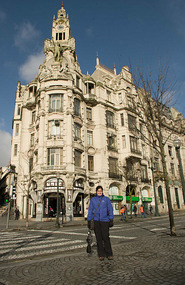
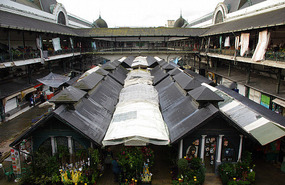
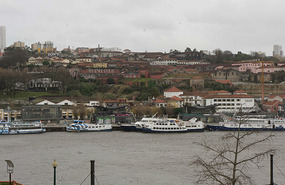
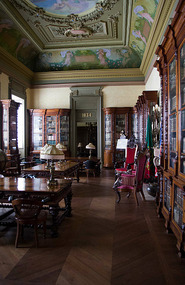
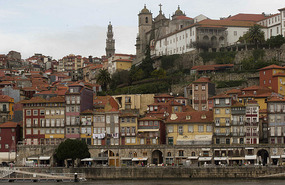
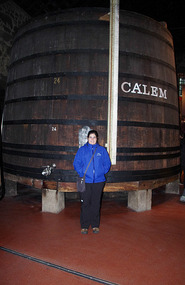
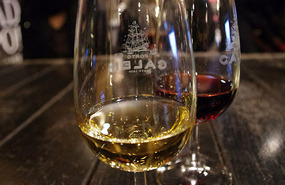

































































2025-05-22